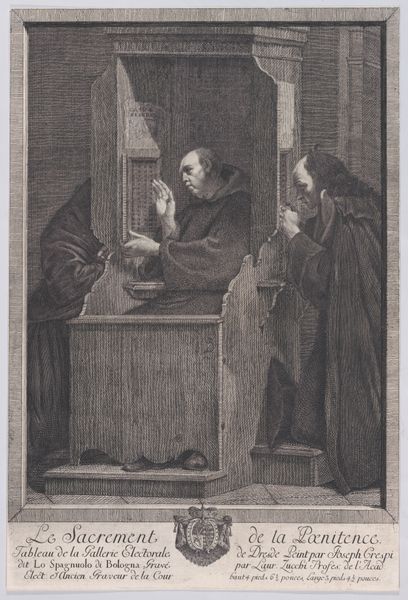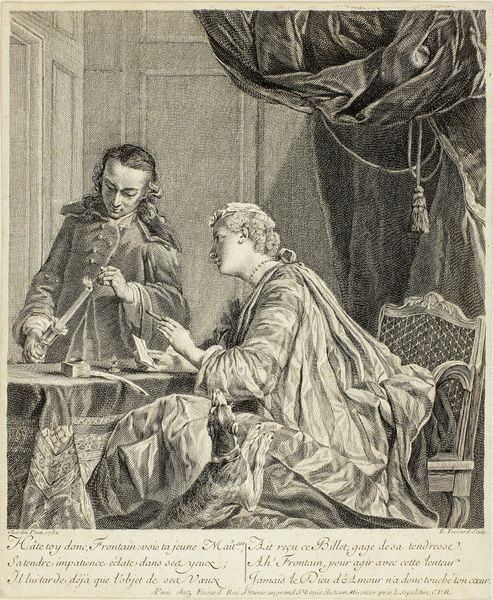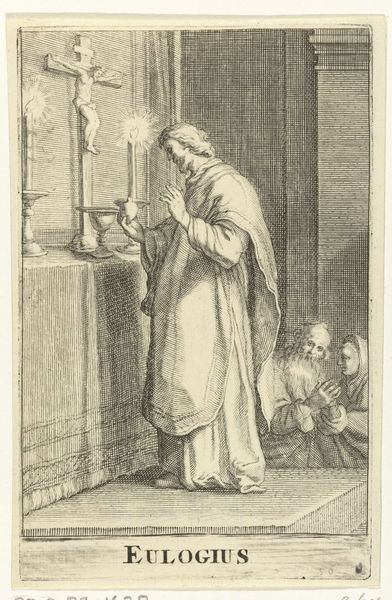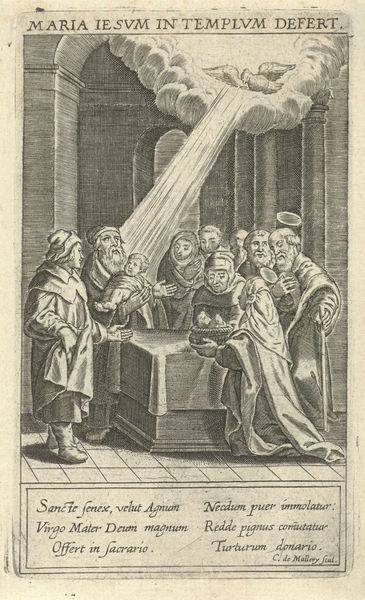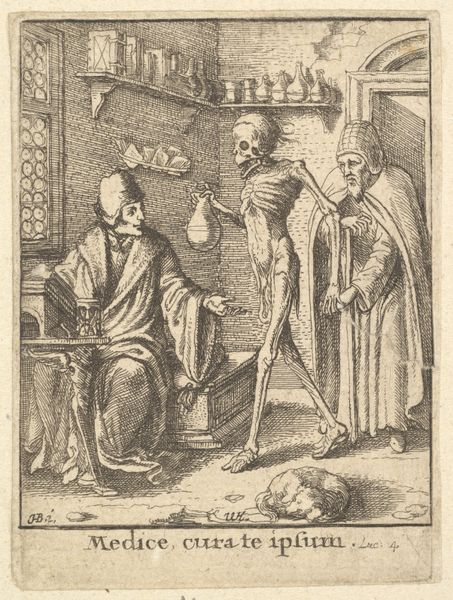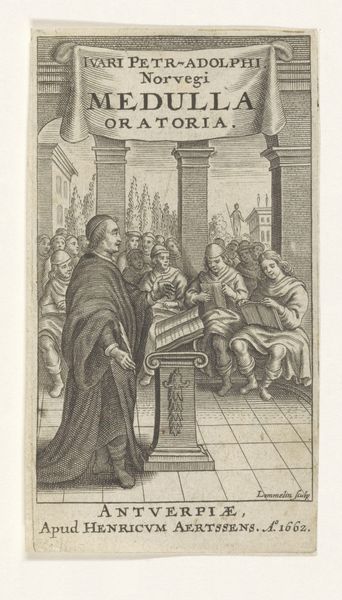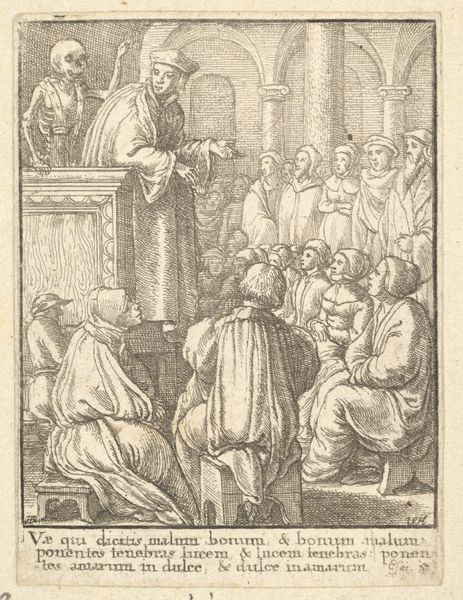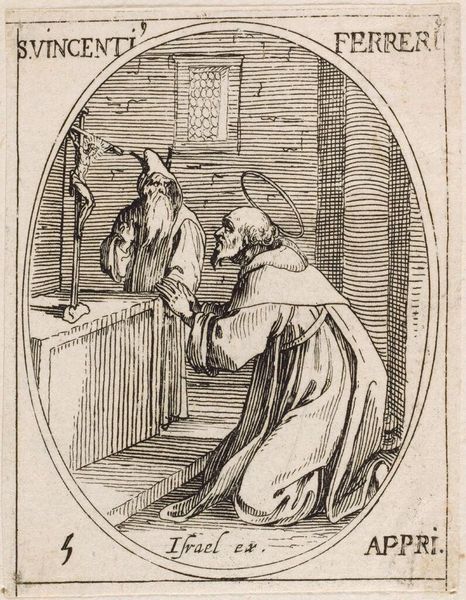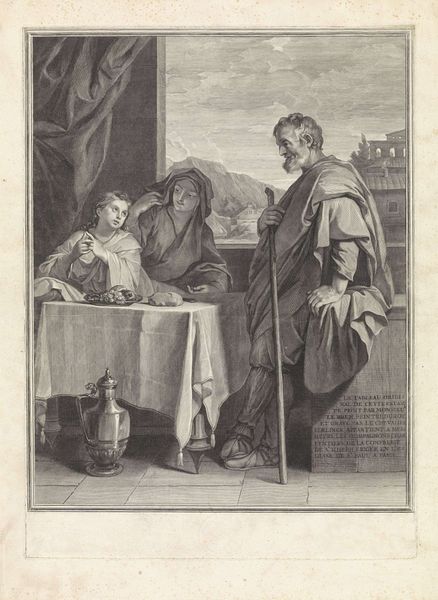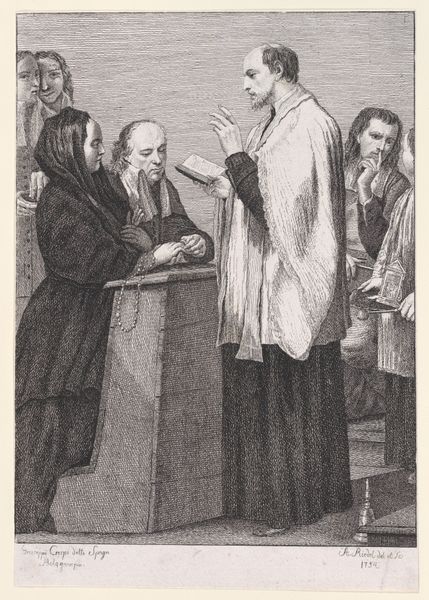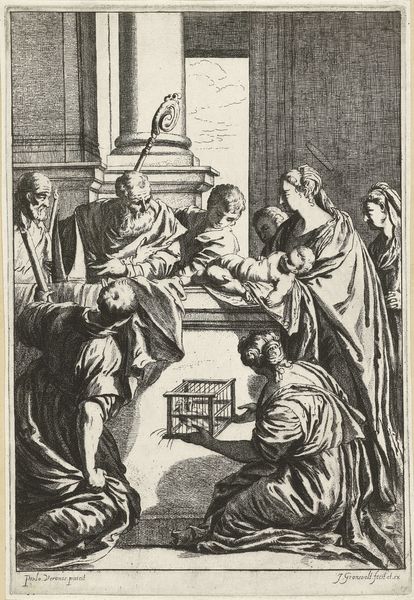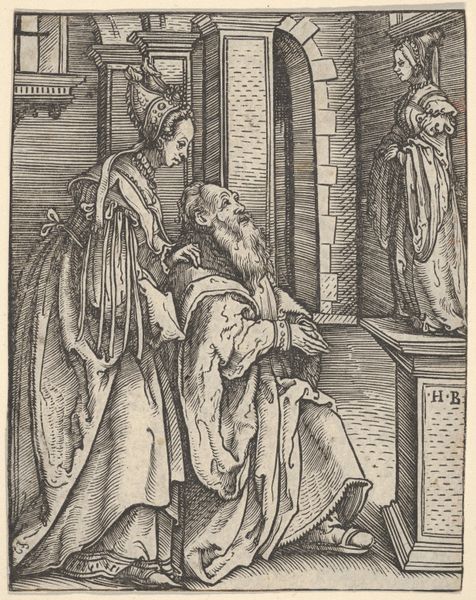
drawing, print, engraving
#
portrait
#
drawing
#
baroque
# print
#
old engraving style
#
genre-painting
#
history-painting
#
engraving
Dimensions: Sheet: 11 1/4 × 8 1/16 in. (28.6 × 20.5 cm)
Copyright: Public Domain
Curator: Here we have Johann Anton Riedel’s "Confession, from 'The Seven Sacraments'", an engraving from 1754, currently residing here at the Metropolitan Museum. Editor: Ah, yes. It’s instantly striking how this monochromatic world seems heavy with unspoken truths. There is such intimacy within this stark print, yet shrouded, wouldn’t you say? Curator: Definitely. Riedel captures such personal intensity through the architecture of the confessional itself, almost framing the sacred exchange happening inside. Consider, though, how confessionals are really theatrical spaces for catharsis. Editor: They are indeed stages! I find the almost formulaic nature interesting; a private ritual, a set piece of dark wood, yet the individual penitent is hopefully liberated by admitting one’s vulnerabilities. But also, observe the priest's raised hand—a very specific gesture indicating absolution, isn’t it? The open palm often indicates giving or receiving. Curator: And think of the penitent holding a rosary! Visually and conceptually they serve as a tangible connection to a higher power during this act of contrition. But consider how the artist utilizes the traditional composition of genre-painting to represent religious custom, highlighting how intertwined they were in Baroque society. It brings me to ponder: does this visual echo intensify our reading of it as sincere and historically informed? Editor: I like your turn of thought! The cross is an anchoring image that, culturally speaking, goes to great lengths toward conveying spiritual ideas in shorthand. It appears that these traditional, accessible cues are what invite people in. Curator: Looking closely now, the lines used to create the textures of robes, wood, even skin – so detailed, really conveying a rich sense of reality through just line work. The light source creates subtle depth. The ability to imply so much detail speaks volumes, particularly when one considers the limitations inherent to the etching process. Editor: Right, to take it back to that "starkness"—I had almost said emptiness—the grayscale coloring lends itself to deeper themes; to contrition, to judgment, and to hope as one hopes for forgiveness. The color story alone adds volumes beyond just simple storytelling. Curator: I agree. Riedel’s composition prompts contemplation on how physical spaces are imbued with ceremonial meanings. Editor: Ultimately, a wonderful look into humanity, the sacred, and our own shadowed selves!
Comments
No comments
Be the first to comment and join the conversation on the ultimate creative platform.
